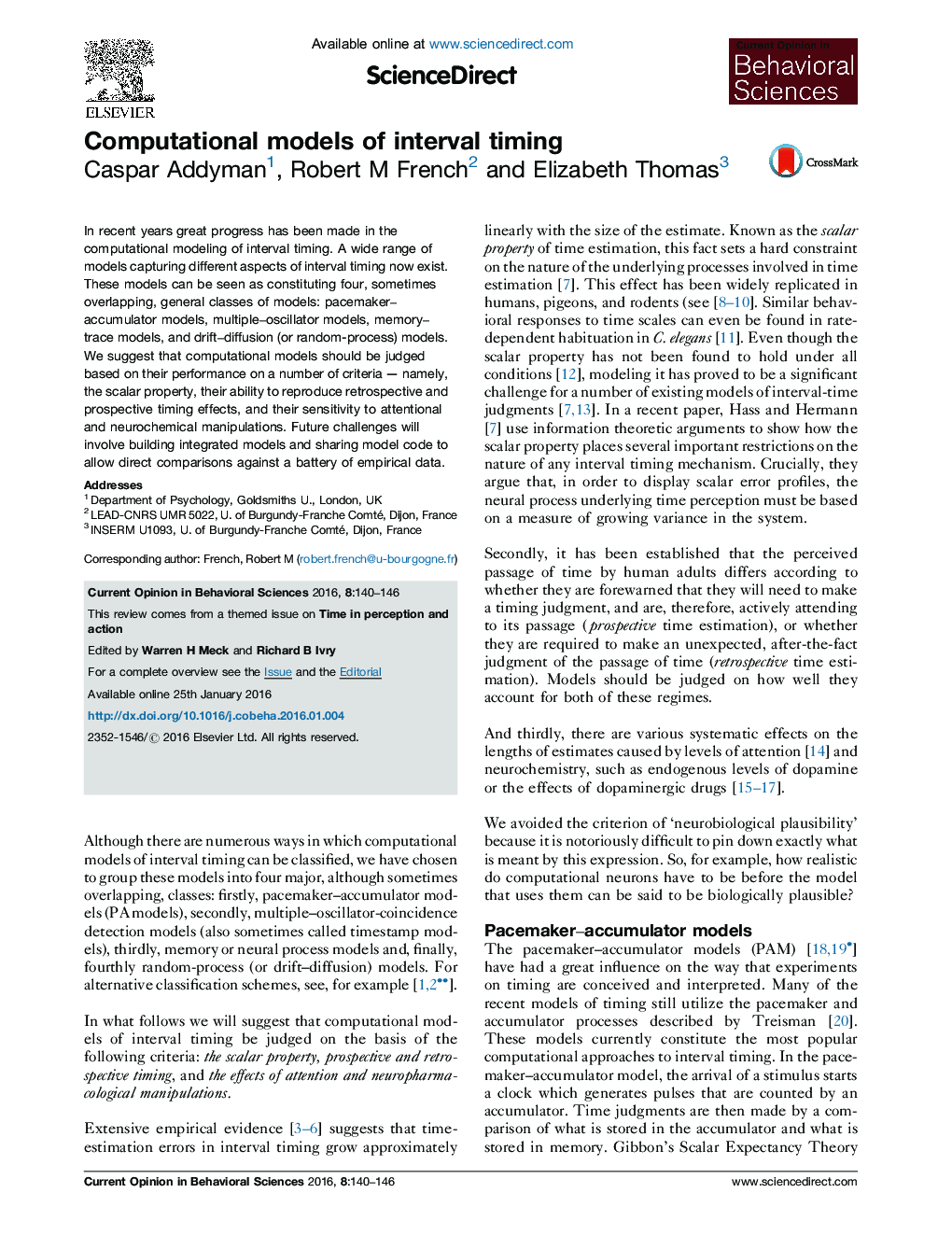| کد مقاله | کد نشریه | سال انتشار | مقاله انگلیسی | نسخه تمام متن |
|---|---|---|---|---|
| 6260508 | 1613082 | 2016 | 7 صفحه PDF | دانلود رایگان |
- Brief description of four classes of computational models of interval timing.
- Three criteria: scalar property, retrospective/prospective timing, attentional load.
- Problems with each class of models.
- Challenges for future computational models of interval timing.
In recent years great progress has been made in the computational modeling of interval timing. A wide range of models capturing different aspects of interval timing now exist. These models can be seen as constituting four, sometimes overlapping, general classes of models: pacemaker-accumulator models, multiple-oscillator models, memory-trace models, and drift-diffusion (or random-process) models. We suggest that computational models should be judged based on their performance on a number of criteria - namely, the scalar property, their ability to reproduce retrospective and prospective timing effects, and their sensitivity to attentional and neurochemical manipulations. Future challenges will involve building integrated models and sharing model code to allow direct comparisons against a battery of empirical data.
Journal: Current Opinion in Behavioral Sciences - Volume 8, April 2016, Pages 140-146
